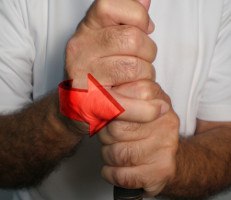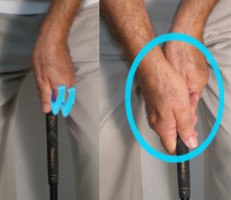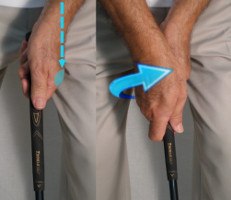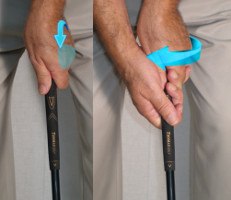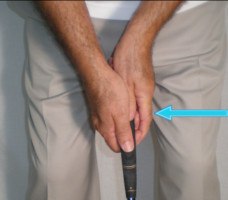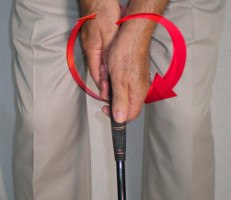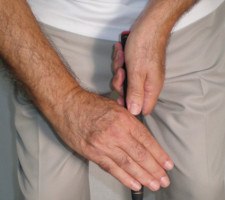Pros and Cons of Every Golf Grip Style |
Best Grip? Overlapping vs Interlocking |
Grip style: Interlocking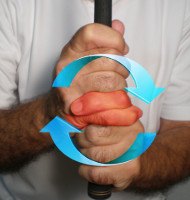 |
Hand position: strong |
Putting grip style / hand position: Reverse overlap / neutral
|

Graham McDowell’s grip reflects the man himself – strong and sturdy. The Northern Irishman has made his mark on golf with a swing that’s somewhat unusual, but produces one solid, accurate shot after another.
At 5’10”, 160 pounds, McDowell’s relies on pinpoint driving to mitigate a lack of distance. He starts with an interlocking grip that unites the hands, just like Jack Nicklaus. Unlike the Golden Bear, McDowell rolls the hands to his right (away from the target), forming a small cupping action in his left wrist. This position is actually reversed by the time McDowell reaches the top of his backswing; here, the left wrist is bowed, same as Dustin Johnson’s.
While not all strong-grip players emulate this cupped-to-bowed wrist sequence, it helps McDowell avoid the dreaded hooks by opening the clubface. Were he to become “shut” at the top, McDowell’s powerful forearms and wrists would likely produce a series of wicked right-to-left shots.
Note, too, that McDowell’s grip isn’t nearly as strong as Johnson’s (nor those of Zach Johnson and Fred Couples). That helps explain his consistent ranking among the PGA TOUR’s straightest drivers.
Now onto the greens. Graeme McDowell’s grip is standard among pros – hands tightly joined in the reverse overlap method, palms facing, light pressure. It’s simple, easily repeated and keeps the putter face square from start to finish. McDowell’s ranking atop the all-important “strokes gained putting” stat for 2014, and his numerous clutch hole-outs in major championships and the Ryder Cup, tell you it’s a grip worth studying.
